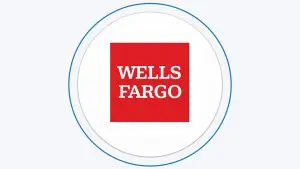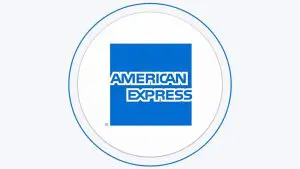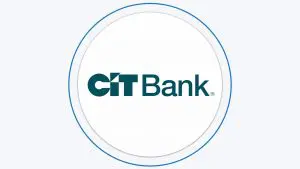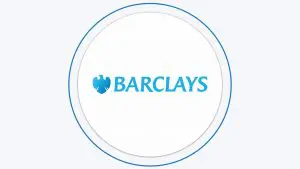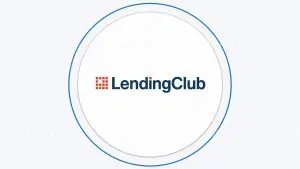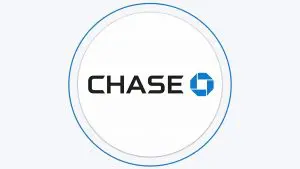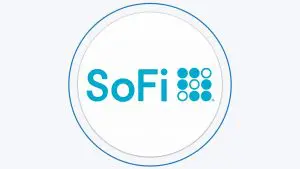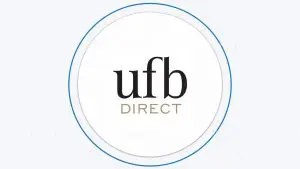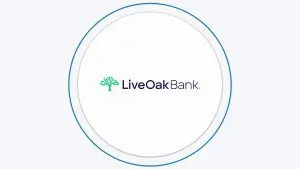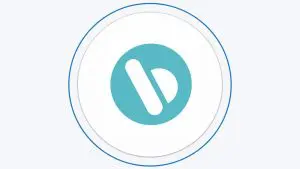Table of Content
In times of high inflation, many consumers feel a little uncertain about their finances. If you do have disposable income, you may wonder whether opening a savings account is a good idea.
Here we’ll explore this topic in more detail to help you make the right decision for your circumstances.
How Does Inflation Affect Savings?
Inflation has a symbiotic relationship with interest rates, so in times of high inflation, the interest rates also tend to be higher. While this may look like a great thing for savers, it is a double edged sword. A savings account can be a safe place to leave your money and get a higher rate without sacrificing accessibility. You can leave your money in an account offering higher returns, with the reassurance that should you need the funds, you can access them.
However, while the interest rates may be high, the “real” value of your money is diminished by the higher rates of inflation. When inflation is higher than your savings rate, by leaving your money in the account for a year, it will have less real value.
For example, if you put $1,000 in a savings account for one year at a rate of 2%, at the end of the year, you’ll have $1,020. However, if the rate of inflation is 5%, you would need $1,050 to obtain the same value for the initial $1000 after one year. So, while you’ve gained $20 on paper, you’ll have lost $50 in the real value of your money.
Why Inflation Hurts Your Savings?
The effects of inflation are most felt when we need to make purchases. When inflation is on the increase, you may notice prices in the grocery store have gone up. However, inflation can also hurt your savings in a number of ways:
- HIgh Inflation Reduces Real Value: We’ve touched on this before, but it is an important point to reiterate. When the rate of inflation is on the increase, the real value of the money in your savings account is reduced. Savings rates rarely match the rate of inflation unless you tie up your funds with a bond or fixed term savings plan. Unfortunately, when inflation is continuing to rise, tying up your money for the long term could be a bad idea, as by the time you can withdraw your funds, it will have far less purchasing power.
- Difficulty Offsetting Account Fees: Many banks charge a maintenance fee on savings accounts each month. While this fee may have seemed insignificant when you opened the account, when inflation is higher and the money has less real world value, it will be more difficult to offset.
- Regular Saving Challenges: Even if you have been very disciplined about saving a set amount each month, high inflation can make this plan a real challenge. When you are spending more on essentials such as gas, food and heating your home, you need to find that extra money from somewhere, so it can be difficult to stick to your savings plan. This means that you will need to be very dedicated to revisiting your budget to see where you can cut your expenses and continue to save.
What Does the FED Do To Control Inflation?
The primary responsibility of the Federal Reserve is controlling inflation to help avoid the economy falling into a recession. The FED accomplishes this via monetary policy, with contractionary monetary policy to slow down economic growth.
The ideal inflation rate is 2% and when it is higher than this rate, demand drives up prices. The FED tightens money supply to slow this growth. The actions of the FED reduce liquidity in the financial system, so it is more expensive to obtain finance. This slows demand, putting downward pressure on prices.
One of the most popular tools of the FED to control inflation is the FFR or Fed Funds Rate. The FFR is the rate that banks charge each other for overnight loans. While this affects bank to bank loans, banks pass on the increasing costs to their own customer loans. So, if the FFR rate increases by 1%, it is likely that consumer lending rates will also increase by a similar amount.
How Does Rising Interest Rates Affect Inflation?
There is a relationship between interest rates and inflation. As we discussed above, the FED uses interest rates to control rising inflation rates to avoid recession. When inflation is high, interest rates also start to increase.
When interest rates increase, savers can earn a little more on their nest egg, but lending is where most consumers will notice the effects. When interest rates go higher, it costs more to borrow. This means that many people will avoid refinancing a mortgage or taking out a loan. They may also be less likely to buy big ticket items that typically need some form of finance. This reduces demand in the market place.
Unfortunately, there are occasions when this may not work. In the case of big ticket items such as cars, production is arranged on a long term schedule. This means that while demand for new cars may start to wane, supply will be unaffected.
Another area where adjusting interest rates may not have the desired effect is on the implementation of monetary policy. Policymakers need to make decisions based on anticipated future trends. When deciding how to impact present levels, policymakers will need to assess the potential future levels. So, there is a possibility of policy error; the FED may trigger an increase in interest rates, which stifles growth or could set the rates too low and fuel even higher inflation.
How Does Inflation Affect Saving Account Interest Rates?
As we discussed earlier, inflation and interest rates have a connected relationship. Due to monetary policy, when inflation is on the rise, interest rates also tend to increase. The FED adjusts the FFR, so banks need to pay more for overnight loans from other banks. The banks recoup this increase in costs by increasing their own interest rates.
While this can be bad news for borrowers, increasing inflation is often reflected in higher savings rates. This means that you can obtain a higher rate on a variety of savings products from basic savings accounts and high yield accounts to CDs.
While you will still need to shop around for the best savings rates, it does mean that you are likely to more frequently find more attractive rates even with the traditional high street banks. Just be aware that if your bank charges a monthly maintenance fee, you’ll want to ensure that you can comfortably meet any waiver criteria to avoid eating into your potential gains with a potentially hefty fee.
Why Consumers Still Tend to Put Their Money in Savings Accounts?
If high inflation can have detrimental effects on the money in savings accounts, why do consumers still tend to put their money in savings accounts? The main reason why savings accounts tend to be attractive to consumers is that the funds are still accessible.
In challenging financial times, many people like the reassurance of being able to withdraw funds as and when they need them. If these consumers put their money into CDs or invest in the stock market, they may incur a penalty or even be unable to access their funds if they have a financial emergency.
Another reason why savings accounts are attractive during high inflation is that you are free to move your money around. While the highest rates for a long term CD may be appealing, if the rate of inflation continues to increase, at the end of the CD term, the real world value of your money will be far less. However, if your money is in a savings account, you may benefit from rate increases or you could transfer your funds across to a higher paying account.
How Much is a 1% Interest Rate Increase on $100k Savings?
If you’re planning for your long term financial health, but don’t want the risk of investing in shares and ETFs, even a modest 1% interest rate increase can make a significant difference to your savings.
If the savings rate increases by 1% and you have $100,000 in savings, you’ll earn an additional $1,000 per year. However, the real financial gain can only be explored when you start to think in terms of compound interest.
For example, if you were getting 2% on your $100,000 initially, we’ll compare what a difference a 1% rate increase will make on your savings. With interest compounded daily, at the base 2%, after one year, you’ll have $102,020. With the additional 1%, at the end of year one, you’ll have $103,045. If you don’t touch this money for five years, you will have $116,182 rather than $110,516.
Obviously, this is a very simple illustration, but there are some great online compound interest calculators that can help you to explore how interest rate increases can impact your savings.
Should I Wait for a Higher Savings Rate?
If you’re unsure about whether you should open a savings account during a time of high inflation rates, you will need to think about what else you would do with the money. After all, leaving money under your mattress will earn you nothing at all. At least with a savings account, you can earn some interest on your funds. While you may not be able to fully combat the rising rate of inflation, it is still a good idea to have some accessible savings.
It is a good idea to shop around for a savings account that offers the highest possible rate, but you will need to think about if there are any account terms that you may not be happy with. For example, high yield savings accounts tend to limit the number of withdrawals you can make per month without incurring an interest penalty.
There may be some compromises to be made to access the highest savings rates. Online savings accounts tend to offer higher rates, but you won’t have access to in person support at a local branch. This means that if you have any queries or concerns, you’ll need to rely on phone or online customer support. You may also not have the option to pay cash into your savings account, which will mean that if you do want to save cash, you’ll need to pay the cash into your regular bank account and transfer the funds.
Do CDs Provide A Better Option In Inflation Times?
In times of high inflation, CDs can be remarkably appealing. As interest rates increase, financial institutions tend to offer far higher rates to commit to longer term CDs. While this is a positive, you do need to think about the real world value of your money. If you tie your funds up for five years and inflation continues to rise, by the time you can release your funds, the money will have far less purchasing power.
If you want to achieve a happy medium between accessibility to your funds and getting the best rates, consider a short term CD. This should allow you access to a higher rate compared to basic savings accounts, but you won’t tie up your money for years. If the inflation and interest rates increase over the six months your money is locked into the CD, you can source a higher paying CD for when it matures to reinvest.
This strategy allows you to leverage the higher CD rates while minimizing the effects of higher inflation. You can watch inflation trends to determine if you should opt for a higher interest rate, longer term CD or stick to the shorter term products.
Alternatively, look for a flexible CD that has no early withdrawal penalties. While these may not offer as high a rate as a typical CD, if inflation and interest rates suddenly spike, you can withdraw your funds and open a new CD with a higher rate.
What Will Happen to My Savings When Inflation Goes Down?
When inflation starts to go back down to typical levels, the interest rates will follow. Since most savings accounts have a variable rate, this will mean that your savings rate will also drop and you’ll earn less interest on your funds. However, if you’ve opened a term savings product with a fixed rate, such as a CD, you’ll continue enjoying the higher rate until the end of the term.
With a variable rate savings account, you’ll receive a notification from your bank or financial institution, letting you know of a rate change and when it will take effect. Of course, you can still shop around and try to move your money to a better paying product, but as inflation is going down, most banks will follow suit and the savings rates will drop across the board.
While on the surface, getting a lower interest rate on your savings seems like a purely negative situation, lower inflation does mean that your money will have greater purchasing power. So, although you may be earning a lower rate of interest, you won’t be fighting the eroding effects of inflation.
Savings Account Benefits & Risks in High Inflation
There are a number of benefits associated with savings accounts when there is high inflation in the economy.
Of course, where there are potential benefits, there is also the possibility of risks associated with savings accounts in high inflation.
- Higher Savings Rates
As we’ve discussed, interest rates tend to follow inflation trends. So as inflation increases, interest rates tend to rise. This means that you’ll earn a higher percentage on the funds you have in your savings account.
- Wide Choice of Higher Rate Accounts
If you’ve searched for a savings account in times of low inflation, you may have been dismayed to find very few higher paying offerings. However, when inflation is increasing, interest rates tend to increase across the board. This makes it easier to find a savings account offering higher rates of interest.
- Account Perks
Many banks recognize that in times of high inflation, customers may struggle to maintain a regular savings plan. So, they may offer incentives to keep you sticking to a regular funding schedule. This could be something as simple as waiving the monthly maintenance fees on your linked checking account, but other banks may offer incentives and bonuses for opening an account.
- Decreased Real Value
This is the most obvious risk of savings accounts in times of high inflation. Essentially, it means that the increasing cost of living will make your savings worth far less in the real world.
As an example, if you had $100 and when you opened the account, this would pay for 100 loaves of bread. If the rate of inflation increases the price of bread to $1.50 during the year, even if you earned $10 interest, when you withdraw the funds after one year, you could only buy 73 loaves of bread.
- Tie ins to Lower Rates
While the fixed rate of a term savings account may be very attractive, if you tie your money up during times of high inflation, you may find that that rate is overtaken by competing products.
For example, if you can get 5% by locking your money into a five year CD, it may seem like a great deal. However, if the inflation trend is rapid increases, you may find that after one or two years, you can get more than 5%. This means that you would need to pay a penalty to release your funds and take advantage of the higher rates.
- Difficulties in Long Term Savings Planning
Since high inflation can make interest rates more volatile, it does make planning your long term savings more difficult.
If you are saving for a long term goal such as buying a home, saving for college or retirement, you may not get the real value returns that you are aiming for with basic savings products and may need to consider more risky strategies such as investing in stocks.
Things to Watch Out For When Choosing a Savings Account
If you’ve decided that opening a savings account is a good strategy for your financial goals, there are some things that you need to watch out for before you settle on a particular bank or account. These include:
- Monthly Maintenance Fees: Many banks have eliminated monthly maintenance fees on savings accounts, but there are still some traditional banks that impose this type of fee. Even if the interest rates have increased, if inflation is high and you are worried about the real value of your money, the last thing you would want to do is spend more money on fees.
If a savings account that does appeal to you has fees, make sure that you can comfortably meet the waiver criteria every month.
- Withdrawal Penalties: This isn’t typically an issue with basic savings accounts, but if you are looking at high yield savings accounts or CDs, watch out for any withdrawal penalties. High yield savings accounts typically allow a maximum number of withdrawals in any calendar month, while CDs have a fixed term.
If you are unsure that you will be able to leave your money in the account for the required time, it may be worth considering a different account.
- Accessibility: If you’re looking for the best rates, you may need to consider online savings accounts. There are a number of fantastic online banks that offer great rates since they don’t need to cover the overhead of maintaining a branch network.
However, this does mean that you won’t have access to a local branch if you run into any problems. You’ll need to be comfortable managing your account online or via an app or ATM, with only phone or email support.
- Perks With Terms and Conditions: Finally, if a bank is offering perks for opening a new savings account, make sure that you check the terms and conditions to ensure that you are comfortable.
A common clause for account opening bonuses is to keep the account open with a minimum balance for a specific period of time. This does mean that if a competing account offers a better rate, you won’t be able to transfer all of your money across to the new account unless you repay your welcome bonus.
Is Inflation Good For Banks?
Many of us like to believe that the banks have finances rigged to always come out on top, but high inflation can have a positive and negative impact for banks.
On the plus side, high inflation does mean that banks can enjoy better margins. With the interest rates on the rise, they can charge more for lending products. Even with paying out higher rates on savings, it still creates a larger margin and greater profits.
For example, in times of low inflation, you may struggle to find a basic savings account that pays 1% or more. Likewise lending rates tend to be quite low, with rates for personal loans from 6 or 7%. This creates a base margin of 5 or 6%.
In times of high inflation, the bank may appear generous and offer 2 or 3% on savings accounts, but when they are charging 12 or 13% or more on personal loans, their base margin has increased to 10%.
However, there are scenarios where banks do not benefit from high inflation. When the economy has high inflation, the cost of living increases and many people start to experience financial difficulties. When families are struggling to pay for food, rent and energy, they may be less concerned with meeting their debt obligations.
In times of high inflation, the reduced cash flow tends to trigger a higher number of bankruptcies and defaults. Although it may appear that banks always get paid, when there are greater defaults, they will need to write off more debt as uncollectible.
FAQ
How Does Inflation Affect Retirement?
High inflation can have a number of effects on retirees and those planning retirement. Firstly, if you’re planning your retirement fund, you may need to take higher risks to achieve the target returns. With the reduced purchasing power, the long term benefit of savings accounts is diminished, so you may need to consider investing in the stock market.
This can be tricky for more conservative retirement planners who lack the confidence to make investment decisions for buying and selling shares, ETFs, crypto and other assets. This may mean that you need to rethink your retirement planning strategy or incur the expense of seeking professional assistance to maximize your returns to meet your retirement goals.
If you’re already retired, higher inflation can have a detrimental impact on your quality of life. You may have budgeted to give you a comfortable income after you retire, but if inflation has dramatically increased the cost of living, you may struggle to obtain the lifestyle you planned for.
For example, if you thought your retirement would involve taking vacations and making significant purchases, if covering basic expenses costs far more than you planned, you’ll need to reassess your plans.
How Does Inflation Affect Money Market Accounts?
Like regular savings accounts, Money Market Accounts have an interest rate calculated according to the current base rate. The rates tend to be variable, so when the interest rates are increased to manage inflation, your MMA rate will also go up. However, as with savings accounts, you still need to consider the real value of your money if it is in the account in the short to medium term.
You also need to consider what fees and charges you’ll incur with your MMA. Some financial institutions charge a maintenance fee or you may incur a fee if you use your associated debit card over a specified number in any month. Any fees that you incur on the account will further reduce the purchasing power of your account funds.
How Does Inflation Affect Checking Accounts?
Most checking accounts are not interest bearing, so rising inflation and interest rates don’t have a direct impact on the account. However, it is worth considering that more than ever, in a high inflation economy, any money sitting in your checking account is losing real world value.
So there is a balancing act between making sure that you have adequate funds to cover your expenses and not incurring any fees and not earning interest on your funds.
How do money market and CD rates differ from one another?
Rates on CDs are typically higher. You can open a CD account if you wish to earn the greatest interest possible. You won't have access to the funds, though, until a specific timeframe has passed.
So, if you anticipate needing the money soon, a CD might not be the greatest option. Withdrawal costs are equal to many months' or a year's worth of interest.
You will be able to withdraw money up to six times per month thanks to money market rates, which provide you access to your money. They occasionally provide checks and typically have higher minimum balances.
However, as the rates are typically only slightly higher than those of standard savings accounts, you won't be making much money on interest. A money market account might not be the greatest option if you want to increase your interest earnings.
High-interest savings accounts: Are they secure?
The federal government regulates savings accounts, so your money is secure the entire time it is in a savings account. The Federal Deposit Insurance Corporation (FDIC) and the National Credit Union Association insure high-yield savings accounts (NCUA).
High-yield savings accounts are subject to the same federal laws regarding withdrawals from savings accounts as regular savings accounts.
Where should I invest my money to get the best interest rate?
If you put a huge sum of money in the appropriate spot, you can earn the highest interest rate, which will increase the amount of money you have by the end of the year. You have other options besides high-yield savings and checking accounts if you want to earn interest.
Look for checking accounts that provide welcome incentives and additional interest for the first banking year. Savings accounts typically pay a little less interest than money market accounts. You can open a CD if you don't believe you need any of the money in your savings. They provide the highest interest rates, but if you want to take some of the money out, there are significant fees.



